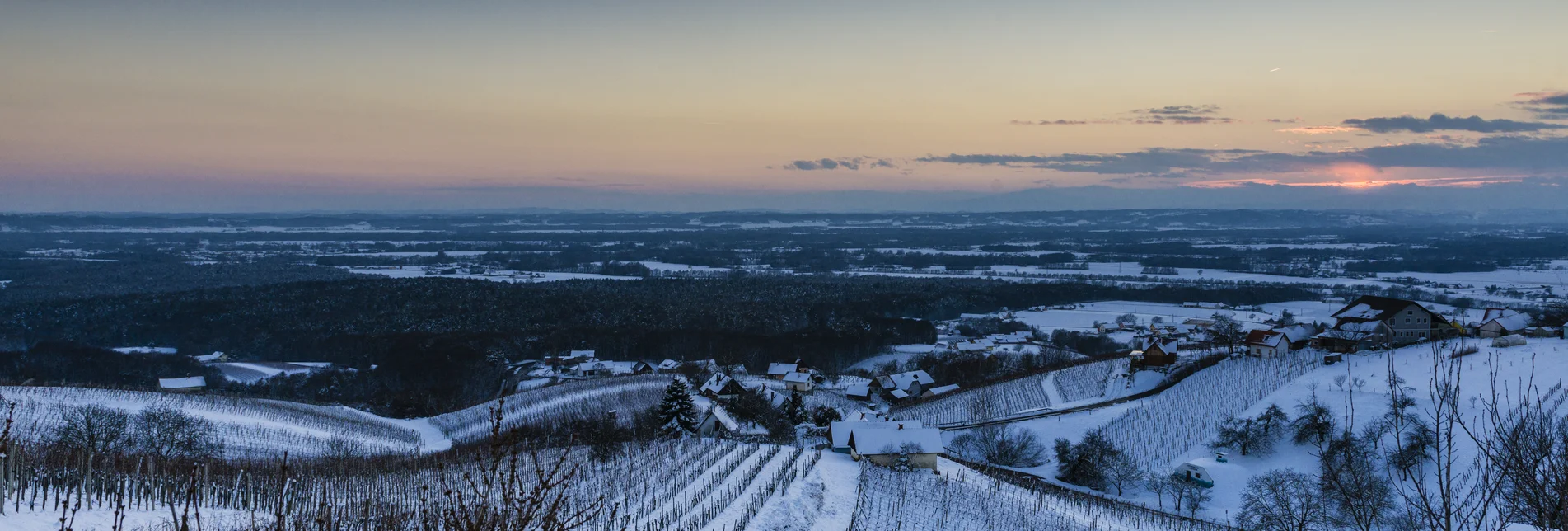

wine region
In the past, the wine-growing region in the Thermen- & Vulkanland was called "Südoststeiermark", its new name is now "Vulkanland Steiermark", and that already says a lot. Because the soil is one of the special features of this area.
It has been a long time since the earth opened its floodgates. However, there are two periods that are responsible for the formation of the volcanic soils in eastern Styria. For example, the Gleichenberger Kogel and the Schaufelgraben in Bairisch Kölldorf were formed about 17 to 12 million years ago (Miocene). Traces of 40 volcanic vents can still be discovered today in southeastern Styria. They originate from the time of the younger volcanism (Pliocene and Pleistocene). For example, the Klöcher Massif was formed about 2.6 million years ago, the Stradener Kogel 1.71 million years ago and the Steinberg of Mühldorf 2.6 million years ago by major lava outpourings. Sometimes precious gems like olivines are enclosed in the tuffs. They can be found near Fehring, in Kapfenstein and around Feldbach. Olivines are representatives of the rock composition from a depth of 60 km.
Volcanic rock occurs in the Thermen- & Vulkanland in different forms, on the one hand as tuff, on the other hand as basalt. Tuff is, to put it simply, solidified igneous rock. That is, those parts that are thrown high into the air during a volcanic eruption. Tuff is coarse-pored and can still be hard, but also already so soft that it can be crumbled. Basalt, on the other hand, is cooled magma, i.e., liquid rock from the earth's interior that eventually cools after erupting. Basalt is dark gray to black, very compact and hard. There is still a basalt plant in Klöch today. Basalt is mainly used for the substructure of railroad tracks.
The styrian system of origin
With the origin system, which came into force with the 2018 vintage, the cultural asset "Styrian wine" is defined particularly strongly and clearly as a craft. The DAC system (DAC = Districtus Austriae Controllatus) emphasizes the handiwork of caring, sustainably acting and responsible winemakers. It distinguishes their work from industrial wine production.
The Styrian DAC areas are the only DAC areas in Austria where hand-harvesting of grapes is mandatory, and where the focus is on local and estate wines. This makes it clear that the Styrian DAC system is much more than a simple marketing tool. It serves to protect a cultural asset, the unique Styrian wine in its diversity and quality.
THE HIGHEST LEVEL OF THE DAC PYRAMID
Rieden wine
A Rieden wine is the expression of the best sites. No vineyard is like the other. Its own character, which is composed of the orientation of the vineyard, the sun exposure, the soil and ultimately the work of the winemaker, gives the wine that comes from this vineyard its individual character.
THE LOCAL SPECIALTIES AND AMBASSADORS OF ORIGIN
Local Wine
Styrian DAC local wines are dry wines, they may have a maximum of four grams of residual sugar per liter. Exceptions - because the fructose is an integral part of the character of these wines - are the Traminer from Klöch.
An important attribute is formed by the individual, defined leading varieties of the municipalities. Sauvignon Blanc is the connecting grape variety of the individual villages and thus represents the diversity of the Styrian Sauvignon Blancs. The second leading variety is the individual one, it represents the typicality of the place.
THE DIVERSITY OF THE AREAS OR STYRIA
Area Wine
The first, broadest and most comprehensive level of the Styrian DAC pyramid - these are the DAC area wines. The DAC area wines are the young, fresh and primary fruity wines from the three DAC regions: Südsteiermark DAC, Vulkanland Steiermark DAC and Weststeiermark DAC. They are each intended to convey a first, grounded impression of the entire terroir (i.e., soils, climate, cellar and craft) of the respective region and to depict the respective grape variety or the grape varieties of a possible cuvée in the greatest possible clarity of taste.








